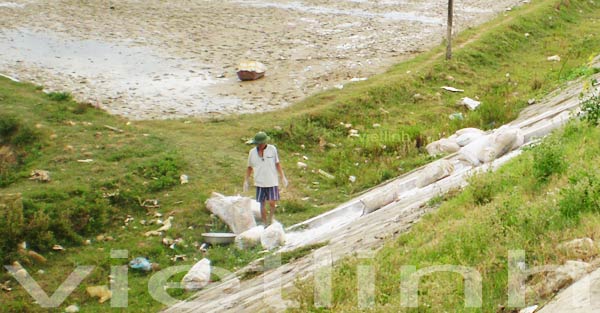- Step 1: Remove water from farming ponds and settling ponds. Remove harmful creatures (shrimp, crabs, snails, insects, fish, etc.). Dredge pond; repair banks, water drains and supplies. Create a slope in the bottom of the pond toward the drains. Thoroughly compact the pond or use canvas to prevent erosion and limit leakage. Use net to fence around the pond to avoid intermediate host species from external environment such as crabs, sand bubbler crabs, snakes, etc.
- Step 2: Apply agricultural lime dosage indicated in Table 1
Table 1: The amount of lime used in soil pH
| pH of the soil in pond and at the bottom of the pond | Lime (tons/ha) |
| 4.5 to 5.0 | 1.5-2.5 |
| 5.1 to 6.0 | 1.0-1.5 |
| 6.1 to 6.5 | 0.5-1.0 |
- Step 3: Harrow thoroughly to soak lime into soil to eliminate shrimps, crabs, sand bubbler crabs, snails, insects, and fish left; kill bacteria in the mud; detoxify heavy metals, H2S and neutralize pH. Ponds with canvas in the bottom just need to be disinfected.
- Step 4: Dry the pond in 20-30 days.
For ponds that cannot be dried: shallow the water; use machine to collect waste in a corner of the pond; pump waste into waste reservoir then apply lime with dosage mentioned in step 2.
Note: After each crop, farming and settling ponds have to be dried thoroughly in 1-2 months to totally destroy pathogens and creatures causing diseases; mineralize and restore the substrate environment.
Source: Temporary process for safe brackish-water shrimp farming in areas affected by diseases in Vietnam. According to The Official Dispatch No. 10/TCTS-NTTS. January 6th, 2015. Vietnamese Directorate of Fisheries
Viet Linh 2015. Translated by Sonia Linh V.
